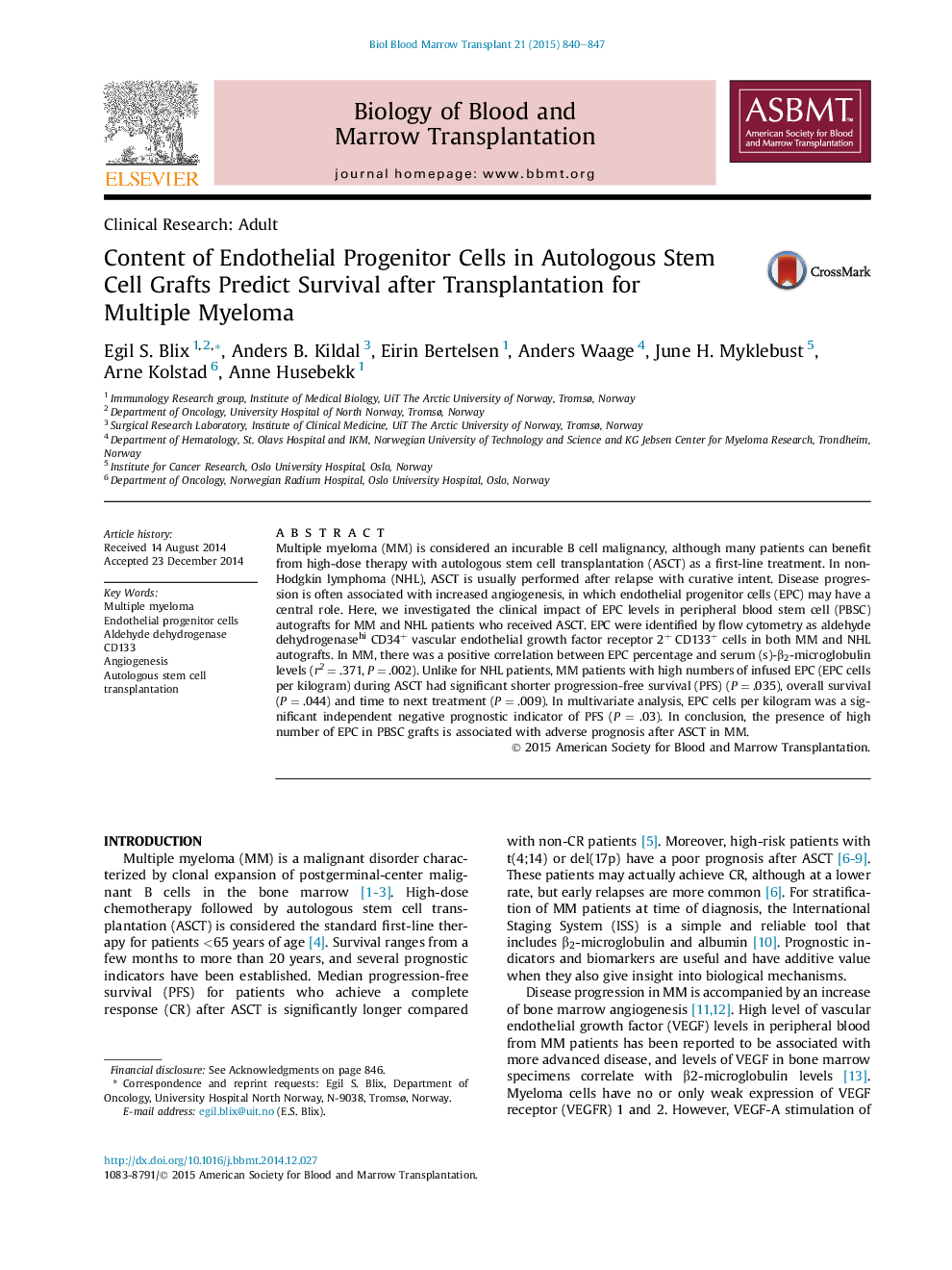| کد مقاله | کد نشریه | سال انتشار | مقاله انگلیسی | نسخه تمام متن |
|---|---|---|---|---|
| 8431461 | 1546267 | 2015 | 8 صفحه PDF | دانلود رایگان |
عنوان انگلیسی مقاله ISI
Content of Endothelial Progenitor Cells in Autologous Stem Cell Grafts Predict Survival after Transplantation for Multiple Myeloma
ترجمه فارسی عنوان
محتوای سلول های پیش ساز آندوتلیال در سلول های بنیادی اتولوگ به عنوان یک پروتز بقاء پس از پیوند برای چندگانه آئرومایوم
دانلود مقاله + سفارش ترجمه
دانلود مقاله ISI انگلیسی
رایگان برای ایرانیان
کلمات کلیدی
موضوعات مرتبط
علوم زیستی و بیوفناوری
بیوشیمی، ژنتیک و زیست شناسی مولکولی
تحقیقات سرطان
چکیده انگلیسی
Multiple myeloma (MM) is considered an incurable B cell malignancy, although many patients can benefit from high-dose therapy with autologous stem cell transplantation (ASCT) as a first-line treatment. In non-Hodgkin lymphoma (NHL), ASCT is usually performed after relapse with curative intent. Disease progression is often associated with increased angiogenesis, in which endothelial progenitor cells (EPC) may have a central role. Here, we investigated the clinical impact of EPC levels in peripheral blood stem cell (PBSC) autografts for MM and NHL patients who received ASCT. EPC were identified by flow cytometry as aldehyde dehydrogenasehi CD34+ vascular endothelial growth factor receptor 2+ CD133+ cells in both MM and NHL autografts. In MM, there was a positive correlation between EPC percentage and serum (s)-β2-microglobulin levels (r2 = .371, P = .002). Unlike for NHL patients, MM patients with high numbers of infused EPC (EPC cells per kilogram) during ASCT had significant shorter progression-free survival (PFS) (P = .035), overall survival (P = .044) and time to next treatment (P = .009). In multivariate analysis, EPC cells per kilogram was a significant independent negative prognostic indicator of PFS (P = .03). In conclusion, the presence of high number of EPC in PBSC grafts is associated with adverse prognosis after ASCT in MM.
ناشر
Database: Elsevier - ScienceDirect (ساینس دایرکت)
Journal: Biology of Blood and Marrow Transplantation - Volume 21, Issue 5, May 2015, Pages 840-847
Journal: Biology of Blood and Marrow Transplantation - Volume 21, Issue 5, May 2015, Pages 840-847
نویسندگان
Egil S. Blix, Anders B. Kildal, Eirin Bertelsen, Anders Waage, June H. Myklebust, Arne Kolstad, Anne Husebekk,
